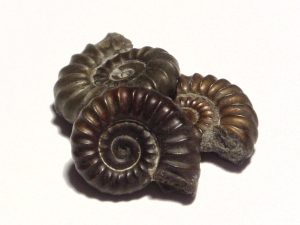What is palaeontology?
Palaeontology is the study of ancient life using fossil evidence. This can be remains of prehistoric plants, mammals, fish, insects, fungi and microbes as well as dinosaurs. Things like footprints, burrows, eggs and even poo can be fossilised too.
Fossil evidence shows us how these organisms changed over time and what our planet was like long ago.
Palaeontologists are passionate, open-minded communicators. Could you be a palaeontologist?
For more information, games and activities about palaeontology, click here.
What are fossils?
A fossil is the preserved remains or impression of a prehistoric plant or animal. The process by which a fossil is formed is called fossilisation.
When an animals dies, the soft parts of it’s body, such as the muscles and organs decompose, leaving only the hard parts, such as the skeleton and horns or shell behind. Sediment covers these remains and as more layers of sediment build up, it becomes compact around the remains and turns to rock.
The remains are then dissolved by water seeping through the rock. Minerals in the water replace the remains, leaving a rock replica called a fossil.
For photographs and more information about fossils, click here.
Do try this at home: make a fossil
Visit this website to find out how to make your own fossils using plaster of Paris, petroleum jelly, modelling clay and a margarine tub. You could also try making an impression in sand to make a more authentic looking, sand covered fossil.
Do visit: The Great North Museum
A great place where you can see and touch real fossils and find out a lot more about them is at the Hancock fossil stories in the Great North Museum: Hancock. Click here to find out more.
If you love dinosaurs you will a life-sized Tyrannosaurus Rex replica skeleton and coming soon, the Natural History Museum’s famous Diplodocus cast ‘Dippy’ is coming to the Great North Museum: Hancock in May 2019. Find out more here.
Take a look at these photographs to see the T-Rex skeleton getting cleaned by one of the museum curators.
Do watch this: Mary Anning
Mary Anning was born on 21 May 1799. When she was 12, she discovered a skull of what she though t was a crocodile sticking out from a cliff. It was actually an ancient reptile called an ichthyosaur (which means ‘fish lizard’). Mary went on to discover a marine reptile called a plesiosaur and a flying reptile called a Dimorphodon. This made her one of the most important scientists of the day and Mary is now remembered as one of the greatest fossil hunters to have ever lived.





